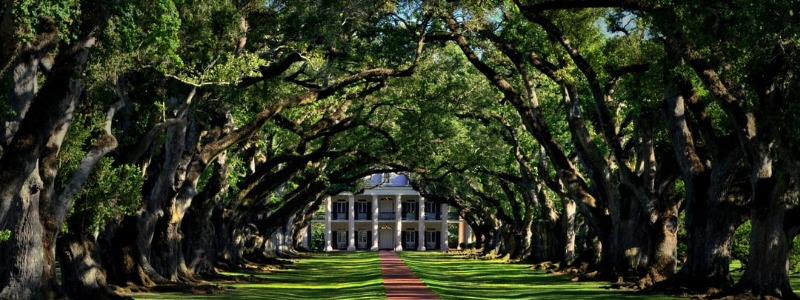Explore the Antebellum Past
Antebellum Charleston rose with the prosperity of the plantation society and the growth of a sizeable merchant and shipping class. The enormous wealth generated by rice plantations encouraged the owners to build large mansions in the city, many of which remain today. But less affluent people also lived in the city, and they left behind an equally charming collection of homes and commercial buildings that show the full scope of the city’s lively past.
Fort Sumter, the harbor fortress where a single cannon shot loosed the four-year bloodshed of the Civil War, symbolized the end of that planter society. On Meeting Street, at Market Street, the Confederate Museum recalls that conflict. It fills the second floor of the city’s 1841 Market Building, a downtown landmark with its high portico and iron-railed double staircase.
Four Plantations to Visit Near Charleston, SC
The three plantations along River Road are Middleton Place, Drayton Hall, and the Magnolia Plantation. The fourth, Boone Hall, is north of Charleston at Mount Pleasant.
For a taste of the “Deep South” as depicted in books and movies such as “Gone With the Wind”, when visiting Charleston, South Carolina, touring the plantations is a must. With their elegant houses and beautiful gardens, it is easy to imagine people of an earlier era sitting, strolling, and enjoying themselves.
Magnolia Plantation and Gardens
This was the first plantation, the land having been purchased in the mid-1600s. The owners were the Drayton family from England. Although the name has changed, the current owners, the Hastie family are direct descendants.
The house was built in the 1920s, the previous two having been destroyed by fires. The Plantation House has wide galleries around it, dormer windows, and a tower. Guided tours of the house are available.
Magnolia is famous for its beautiful gardens which include a formal 17th century English Garden, lakes with romantic bridges, and wonderful flowers. In spring the paths are bordered by a riot of color from the azaleas, while magnolias bloom overhead.
Other gardens include a Biblical Garden, the Barbados Tropical Garden, a Herb Garden, a Topiary Garden, and a Horticultural Maze.
Opening times: 8.00 a.m. – 5.30 p.m.
Admission (Basic and House): Adults $22/children (6-12) $17/Seniors $21
Drayton Hall
This Georgian-Palladian Mansion is the second of the three houses on River Road to be built and the only one to survive.
It is no coincidence that the name is the same as that of the original owners of Magnolia Plantation. Drayton Hall was constructed by one of the creators of Magnolia.
The house was surrounded by land which included formal gardens, fields of indigo, rice, and staple crops.
There are guided tours of the house and visitors are free to wander the grounds and, if they wish, picnic in the shade of the oaks.
Opening Times: March – October 10.00 a.m. – 4.00 p.m. November – February 10.00 a.m. – 3.00 p.m.
Admission: Adults $14/young people (12-18)/children (6-11) $6.
Middleton Place
This was the home of Henry Middleton, President of the First Continental Congress.
Middleton Place House was constructed in 1755 as the gentlemen’s guest wing. The original house was burned during the American Civil War so the family moved into the guest wing. During the guided tours visitors can see portraits by Benjamin West and Thomas Sully, fine silver and first editions by Audobon.
The gardens are the oldest landscaped gardens in America. They were created in the 17th century after the European design. In winter camellias are in bloom and in spring they are ablaze with azaleas. In summer there are magnolias, crepe myrtle, and roses.
Opening times: Tuesday-Sunday 10.00 a.m. – 4.30 p.m. Monday 12.00 noon – 4.30 p.m.
Admission: Adults $25/children (7-15) $5.
Boone Hall Plantation, Mount Pleasant
This is probably America’s most photographed plantation, not just for its picturesque qualities but because it is still a working plantation.
Boone Hall appears, with its snow-white columns and pediment, at the end of the half-mile romantic Avenue of Oaks (all dripping with Spanish moss).
Tours of the house are given by ladies dressed as Southern Belles.
There are several other buildings on the grounds such as the Smoke House, the Commissary, Stables, the Cotton Gin House, and the Slave Cabins.
The grounds are extensive. In front of the house is the formal flower garden while further away is the wildflower garden and a duck pond.
Opening times: Monday – Saturday 9.00 a.m. – 5.00 p.m. Sunday 1.00 p.m. – 4.00 p.m.
Admission: Adults $17.50/children (6-12) $7.50/Seniors $15.
There are plenty of hotels of all prices in Charleston itself which has more houses and churches to discover.
